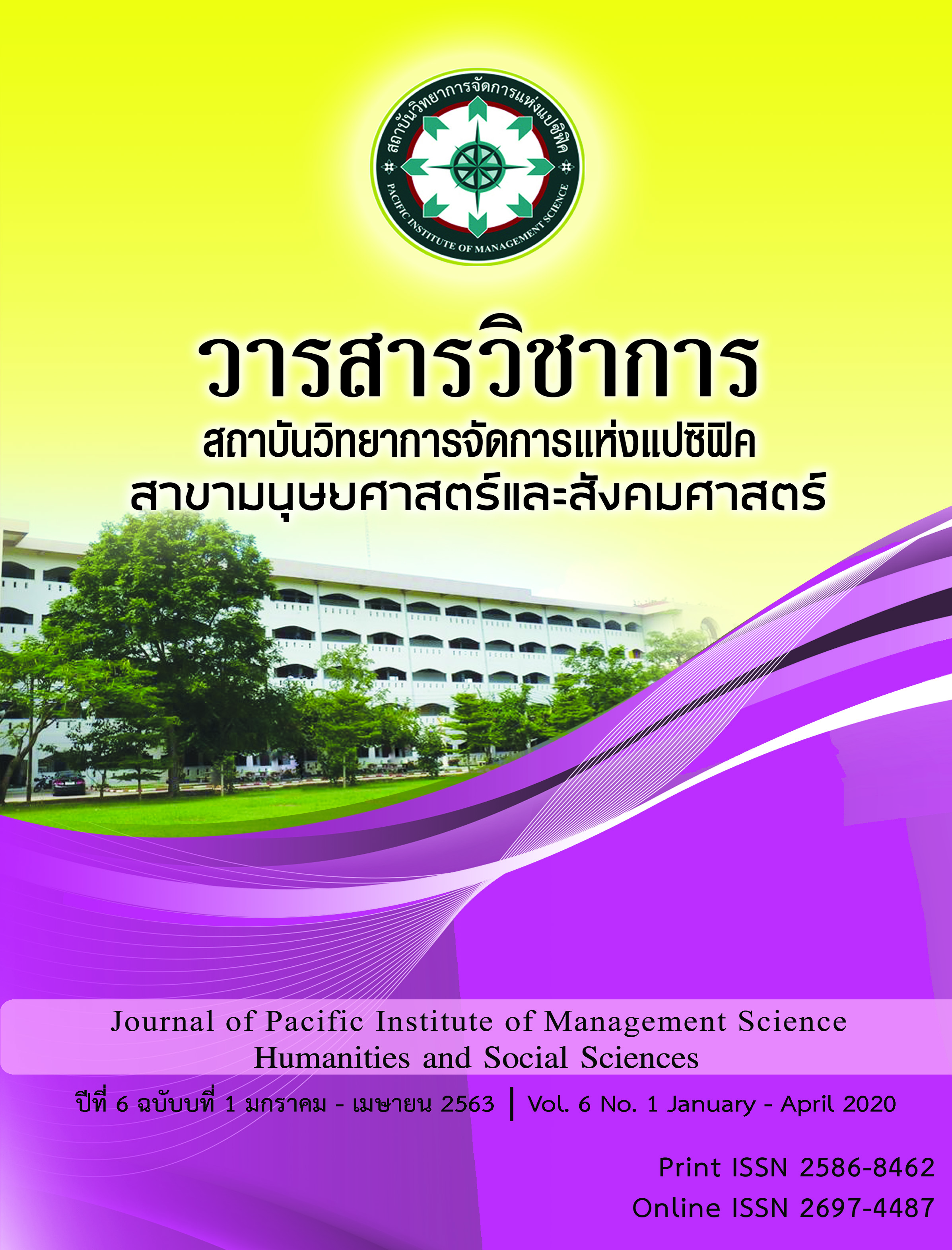Innovative Communication Learning about Beauty on YouTube
Keywords:
YouTube, Beauty Image, Negotiation, ExposureAbstract
This research aims to: 1) study the perception of beauty image of Thai women through beauty programs on YouTube, 2) describe the exposure of the audiences of beauty programs on YouTube, and 3) explain the negotiation of beauty content between the audience with beauty gurus on YouTube. The research methodology is qualitative research by using the textual analysis of 100 beauty programs on YouTube from 5 channels; Momay with you, Pearypie, wwwerkerkcom, missPimpaka and Yaeuunws, the interviews of 2 beauty gurus, and focus group on 30 YouTube audiences who subscribed at least 2 channels from sample.
The study found that the beauty image of Thai women which reflect through beauty programs on YouTube is an external appearance that can be adjusted and the attitude and intelligence that women need to have critical thinking and rational synthesis. The exposure behavior of the audience has 3 steps; searching, watching and utilizing content, and the method of viewing beauty program is sequential timeline, selected range and stop for considering. Moreover, the positive attitude affects directly to knowledge and behavior. In addition, the negotiation of content happens in 3 parts; firstly, episode selection, secondly, while watching the program, and finally, the utilizing content by the audiences. Therefore, the individual beauty creation by audience shows that there are the most powerful of content bargain.
References
ธัมส์อัพ (2562), Infographic: สถิติผู้ใช้และเรื่องที่น่าสนใจบนแพลตฟอร์ม YouTube ในปี 2019. [ออนไลน์]. สืบค้นเมื่อ 18 พฤษภาคม 2562. จาก https://www.thumbsup.in.th/ 2019/03/youtube-stats-2019/.
ผู้จัดการออนไลน์. (2553). จริงหรือ? ผลสำรวจพบว่า 95% ผู้หญิงไทยชอบการแต่งหน้า. [ออนไลน์]. สืบค้นเมื่อ 5 กรกฎาคม 2558. จาก http://www.manager.co.th/Celeb Online/ViewNews.aspx?NewsID=9530000083135.
พิมพันธ์ เดชะคุปต์. (2557). การจัดการเรียนรู้ในศตวรรษที่ 21. กรุงเทพฯ: โรงพิมพ์แห่งจุฬาลงกรณ์มหาวิทยาลัย.
โพสิชันนิ่ง. (2557). คนไทยดูยูทูบ 1,000 ล้านวิวต่อเดือน บันเทิงเยอะสุด. [ออนไลน์] สืบค้นเมื่อ 21 พฤษภาคม 2557. จาก http://www.positioningmag.com/content/คนไทยดู-youtube-1000-ล้านวิวต่อเดือน-บันเทิงเยอะสุด.
วิจารณ์ พานิช. (2555). วิถีสร้างการเรียนรู้เพื่อศิษย์ในศตวรรษที่ 21. กรุงเทพฯ: มูลนิธิสดศรี-สฤษดิ์วงศ์.
อิงอร สุพันธุ์วณิช. (2547). ผ่องผิวผุดผาดเพี้ยงพราวพรรณ: อุดมคติความงามของผิวในวรรณคดีไทย. วารสารภาษาและวรรณคดีไทย 21 : 152-163.
Bhatia, A (2018). Interdiscursive performance in digital professions: the case of YouTube tutorials. Journal of Pragmatics. (124) : 106-120
Bloom, Benjamin S., George F. Madaus, and J. Thomas Hastings. (1981). Evaluation to improve learning. New York: McGraw-Hill.
Hurt, H. Thomas, Michael D. Scott, and James C. McCroskey. (1978). Communication in the classroom. Reading. Mass: Addison-Wesley Pub. Co.
Johnson, A. (2012). Beauty Gurus – What is a Beauty Guru and How to be a Beauty Guru. [Online]. Retrieved on November 22, 2014. from http://offbeatlook.com /beauty-guru#.
Liu, Y. (2010). Social Media Tool as a Learning Resource. Journal of Educational Technology Development and Exchange (10):101-114.
Maryan, M, Timothy, W.M., and Antonella, F. (2017). Women, makeup, and authenticity: Negotiating embodiment and discourses of beauty. Journal of Consumer Culture 0(0):1-22. [Online]. Retrieved on November 2, 2018. from https://doi.org/10.1177 /1469540517736558
Meyers, Eric M. (2012). A Comment of Learning: Media Literacy Practices in YouTube. International Journal of Learning and Media 4(3-4):33-47.
Miller, M. (2009). YouTube for Business: Online video marketing for any business. Indianapolis: Que.
Trilling, B., Fadel, C. (2009). 21st century skills: learning for life in our times. San Francisco: Jossey-Bass.
Downloads
Published
Issue
Section
License
บทความที่ได้รับการตีพิมพ์เป็นลิขสิทธิ์ของ สถาบันวิทยาการจัดการแห่งแปซิฟิค
ข้อความที่ปรากฏในบทความแต่ละเรื่องในวารสารวิชาการเล่มนี้เป็นความคิดเห็นส่วนตัวของผู้เขียนแต่ละท่านไม่เกี่ยวข้องกับสถาบันวิทยาการจัดการแห่งแปซิฟิค และคณาจารย์ท่านอื่นๆในสถาบันฯ แต่อย่างใด ความรับผิดชอบองค์ประกอบทั้งหมดของบทความแต่ละเรื่องเป็นของผู้เขียนแต่ละท่าน หากมีความผิดพลาดใดๆ ผู้เขียนแต่ละท่านจะรับผิดชอบบทความของตนเองแต่ผู้เดียว







